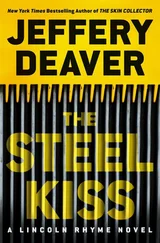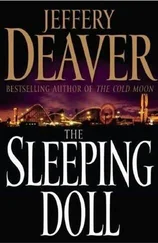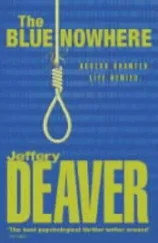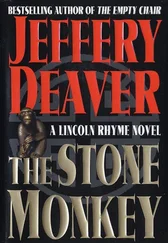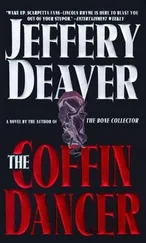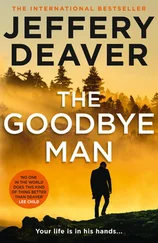· Bloody washcloth, matching set found in victim’s apartment (DNA match to victim’s)
· Dirt with composition similar to dirt in Clinton State Park
ARTHUR RHYME’S HOUSE:
· Edge Advanced Gel with aloe, shave cream, associated with that from primary crime scene
· Pringles barbecue-flavored chips, fat free
· TruGro fertilizer (garage)
· Spade containing dirt similar to dirt in Clinton State Park (garage)
· Chicago Cutlery knives, same type as the MW
· Alton EZ-Walk shoes, size 10 1/2, tread similar to that at primary crime scene
· Direct-mail flyers from Wilcox Gallery, Boston, and Anderson-Billings Fine Arts, Carmel, about shows of Harvey Prescott paintings
· Box of Safe-Hand latex gloves, rubber composition similar to that of fleck found at primary crime scene (garage)
“Man, it’s pretty incriminating, Rhyme,” Sachs said, standing back, hand on her hips.
“And using a prepaid cell? And references to ‘Art.’ But no address where he lives or works. That would suggest an affair… Any other details?”
“No. Other than the pictures.”
“Tape them up,” he instructed while scanning the chart, regretting that he hadn’t searched the scene himself-vicariously, that was, with Amelia Sachs, as they often did, via a microphone/headset or a high-definition video camera she wore. It seemed like a competent CS job, but not stellar. No photos of the nonscene rooms. And the knife…He saw the picture of the bloody weapon, beneath the bed. An officer was lifting a flap of dust ruffle to get a good shot. Was it invisible with the cloth down (which meant the perp might logically have missed it in the frenzy of the moment) or was it visible, suggesting it had been left intentionally as planted evidence?
He studied the picture of packing material on the floor, apparently what the Prescott painting had been wrapped in.
“Something’s wrong,” he whispered.
Sachs, standing at the whiteboard, glanced his way.
“The painting,” Rhyme continued.
“What about it?”
“LaGrange suggested two motives. One, Arthur stole the Prescott as a cover because he wanted to kill Alice to get her out of his life.”
“Right.”
“But,” Rhyme went on, “to make a homicide seem incidental to a burglary, a smart perp wouldn’t steal the one thing in the apartment that could be connected to him. Remember, Art had owned a Prescott. And he had direct-mail flyers about them.”
“Sure, Rhyme, that doesn’t make any sense.”
“And say he really did want the painting and couldn’t afford it. Well, it’s a hell of a lot safer and easier to break in and cart it off during the day when the owner’s at work, rather than murder them for it.” His cousin’s demeanor too, though not high in Rhyme’s arsenal when he assessed guilt or innocence, nagged. “Maybe he wasn’t playing innocent. Maybe he was innocent… Pretty incriminating, you said? No. Too incriminating.”
He thought to himself: Let’s just postulate that he didn’t do it. If not, then the consequences were significant. Because this wasn’t simply a case of mistaken identity; the evidence matched too closely-including a conclusive connection between her blood and his car. No, if Art was innocent, then someone had gone to a great deal of trouble to set him up.
“I’m thinking he was framed.”
“Why?”
“Motive?” he muttered. “We don’t care at this point. The relevant question now is how . We answer that, it can point us to who . We might get why along the way, but that’s not our priority. So we start with a premise that someone else, Mr. X, murdered Alice Sanderson and stole the painting, then framed Arthur. Now, Sachs, how could he have done it?”
A wince-her arthritis again-and she sat. She thought for several moments, then said, “Mr. X followed Arthur and followed Alice. He saw they had an interest in art, put them together at the gallery and found their identities.”
“Mr. X knows she owns a Prescott. He wants one but can’t afford it.”
“Right.” Sachs nodded at the evidence chart. “Then he breaks into Arthur’s house, sees that he owns Pringles, Edge shave cream, TruGro fertilizer, and Chicago Cutlery knives. He steals some to plant. He knows what shoes Arthur wears, so he can leave the footprint, and he gets some of the dirt from the state park on Arthur’s shovel…
“Now, let’s think about May twelfth. Somehow Mr. X knows that Art always leaves work early on Thursdays and goes running in a deserted park-so he doesn’t have an alibi. He goes to the vic’s apartment, kills her, steals the painting and calls from a pay phone to report the screams and seeing a man take the painting to a car that looks a lot like Arthur’s, with a partial tag number. Then he heads out to Arthur’s house in New Jersey and leaves the traces of blood, the dirt, the washcloth, the shovel.”
The phone rang. The caller was Arthur’s defense lawyer. The man sounded harried as he reiterated everything that the assistant district attorney had explained. He offered nothing that might help them and, in fact, tried several times to talk them into pressuring Arthur to take a plea. “They’ll nail him up,” the man said. “Do him a favor. I’ll get him fifteen years.”
“That’ll destroy him,” Rhyme said.
“It won’t destroy him as much as a life sentence.”
Rhyme said a chilly good-bye and hung up. He stared again at the evidence board.
Then something else occurred to him.
“What is it, Rhyme?” Sachs had noticed that his eyes were rising to the ceiling.
“Think maybe he’s done this before?”
“How do you mean?”
“Assuming the goal-the motive -was to steal the painting, well, it’s not exactly a onetime score. Not like a Renoir you fence for ten million and disappear forever. The whole thing smells like an enterprise. The perp’s hit on a smart way to get away with a crime. And he’s going to keep at it until somebody stops him.”
“Yeah, good point. So we should look for thefts of other paintings.”
“No. Why should he steal just paintings? It could be anything. But there’s one common element.”
Sachs frowned then provided the answer. “Homicide.”
“Exactly. Since the perp frames somebody else, he has to murder the victims-because they could identify him. Call somebody at Homicide. At home if you need to. We’re looking for the same scenario: an underlying crime, maybe a theft, the vic murdered and strong circumstantial evidence.”
“And maybe a DNA link that might’ve been planted.”
“Good,” he said, excited at the thought they might be on to something here. “And if he’s sticking to his formula, there’ll be an anonymous witness who gave nine-one-one some specific identifying information.”
She walked to a desk in the corner of the lab, sat and placed the call.
Rhyme leaned his head back in his wheelchair and observed his partner on the phone. He noticed dried blood in her thumbnail. A mark was just visible above her ear, half hidden by her straight red hair. Sachs did this frequently, scratching her scalp, teasing her nails, damaging herself in small ways-both a habit and an indicator of the stress that drove her.
She was nodding, and her eyes took on a focused gaze, as she wrote. His own heart-though he couldn’t feel it directly-had speeded up. She’d learned something significant. Her pen dried up. She tossed it onto the floor and whipped out another as quickly as she drew her pistol in combat shooting competitions.
After ten minutes she hung up.
“Hey, Rhyme, get this.” She sat next to him, in a wicker chair. “I talked to Flintlock.”
Читать дальше


